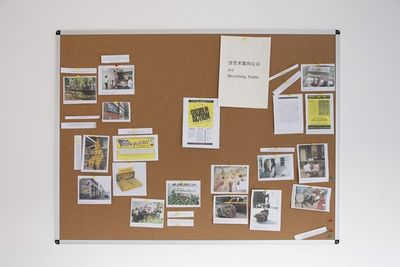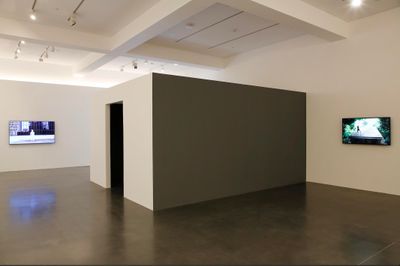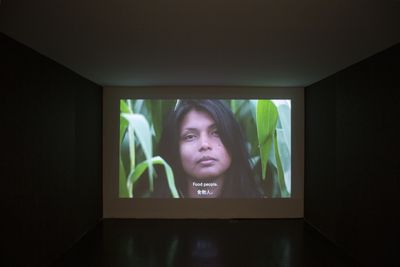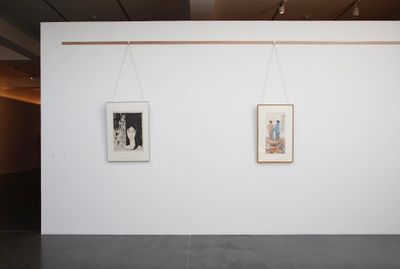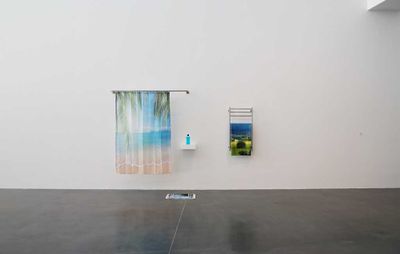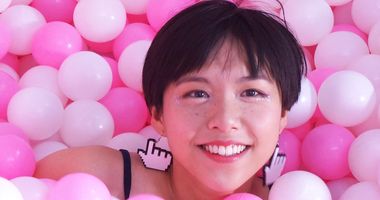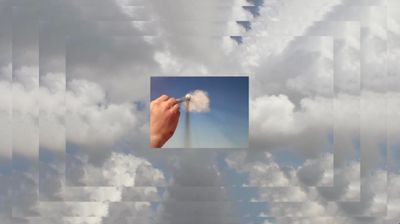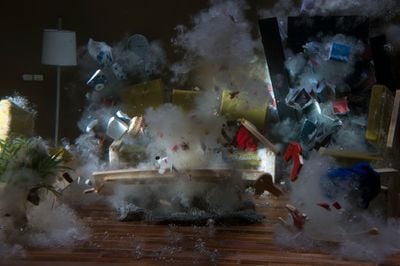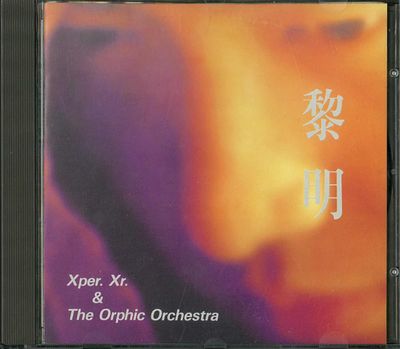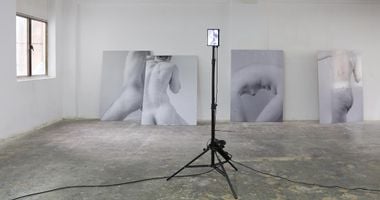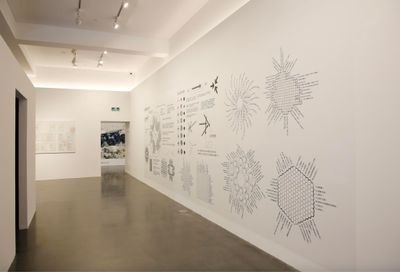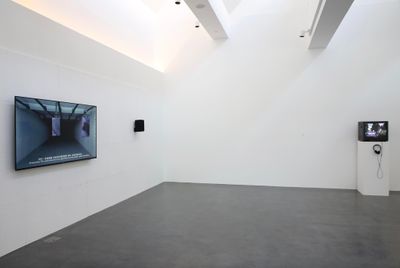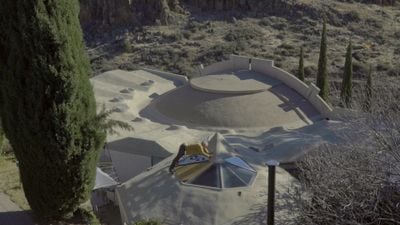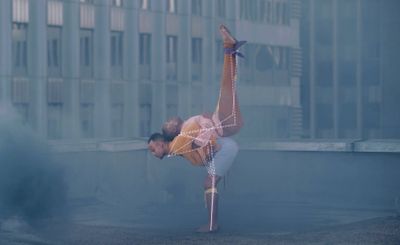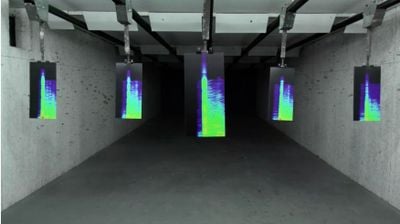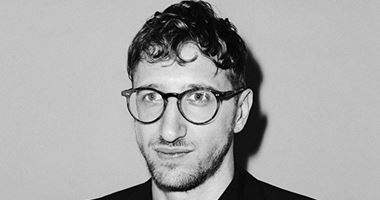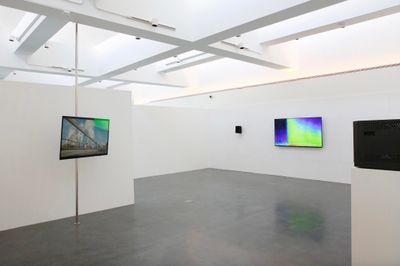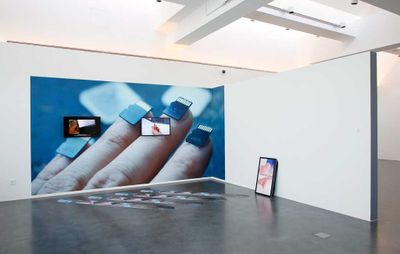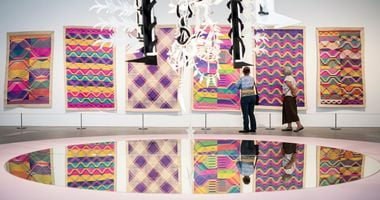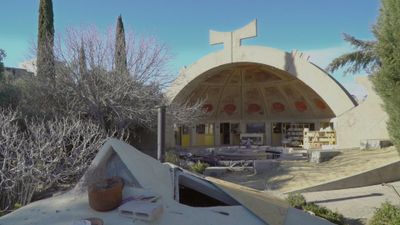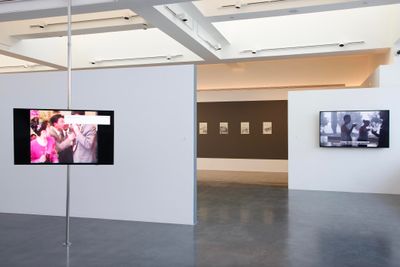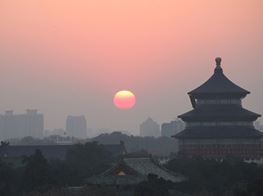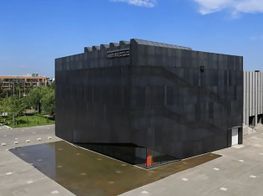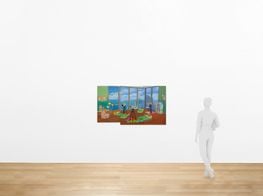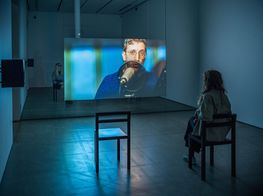'Principle of Hope' at Inside-Out Art Museum in Beijing
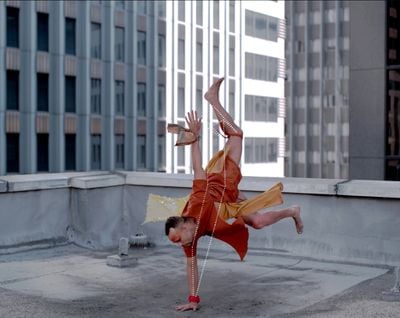
Liam Young, Camouflage Choreography (2021) (still). Dance performance film. 5 min. Courtesy the artist.
Following exhibitions like Imagination and Mainstream Value and Can't Help Turning Around, which looked at China through a historical perspective, The Principle of Hope at Inside-Out Art Museum in Beijing (16 October 2021–27 February 2022), casts its eye on the present and future, while broadening its perspective with the inclusion of international artists.
With its absence of optimism despite contentions of hope, the exhibition's ethos can be understood through its title, borrowed from Ernst Bloch's The Principle of Hope. The three-volume work was penned in 1939, when Bloch was exiled from Nazi Germany to the United States amid events that were out of his control.
Drawing parallels with the uncertain period of the 1930s and 40s, the exhibition looks at the conditions shaping the present, from environmental pollution and machine algorithms to postcolonial and global mobility.
With themes reminiscent of the late curator Okwui Enwezor's 2015 Venice Biennale exhibition All the World's Futures, the breadth of this show's curatorial focus could make it a biennial.
The curatorial is thematised along four lines: 'the marginalised future' curated by Yin Shuai, 'the concept of "future" and human agency' by Huang Wenlong and Zhu Siyu, 'survival strategies for data governance' by Jerome Zhang, and 'technology and human emotions' organised by Liang Chouwa and Scarly Zhou.
But these directions do not unfold as chapters or defined sectors. Rather, 33 artworks by 33 artists are kneaded into one presentation, an arrangement that poses the first challenge to viewing the exhibition.
The show opens with naïve visions of the future from the socialist period, including Chen Juanyin's light-hearted ink on paper painting Public Holidays (1954), created after the founding of People's Republic of China, and Zhong Ming's woodcut print Spring? (late 1970s), made after the Cultural Revolution.
While these pieces set a hopeful tone, what follows are representations of immediate collapse. Péter Dobai's documentary film Ancient Body (1971), shot in the backdrop of the bone-broth communism in the 1970s, captures an ever-changing reality. Hungarian youths looking for their ideal selves turn to reading and exercise to preserve hope but ultimately break down in tears.
These emotional fluctuations are succeeded by Mak2's artificial landscape installation More Perfect Sea (2019), a shower curtain printed with the image of a crystal blue sea and beach placed beside a bottle of blue mouthwash. Just as hope begins to germinate, it is shattered again.
Contextual collisions appear throughout the exhibition, with works spanning from 1921 to 2021 juxtaposed to shed light on the principles of hope, or lack thereof, exhibited by people across time and space, further complicating the viewing experience.
The 1921 play Rossum's Universal Robots, displayed as large-format stage photos and printed copies of script excerpts, looks at the consequences of technological development whereby androids lead to the extinction of humans.
One hundred years later, Chen Chen Yu's single-channel video installation Vapor Equilibrium (2018) conceives of cloud information as a kind of atmosphere that covers the earth, leading to chaos.
A fatalist future is portrayed, too, in Pedro Neves Marques' YWY, the Android (2017), a video installation in which irreproducible androids communicate with genetically modified corn, while Goang-Ming Yuan's single-channel video installation Dwelling (2012) shows middle-class families disintegrating every five minutes.
The central proposition here is that the intertwining of technology, capital, and culture has deprived humans of the possibility of a plausible future. This fatalistic certainty may explain why the curators have focused on absurdism as an antidote.
In Hong Kong, experimental musician Xper. Xr released their debut cassette Murmur in 1989, with industrial sounds expressing an underground alienation.
In contrast, alienation is satirised by the 2020 video Everything Will Be O.K. by Pauline Julier and Nicolas Chapoulier. Set in Rome during the pandemic, a screen descends from the ceiling as drones fly into the darkness, unfolding the reassuring slogan 'Everything will be O.K.' in multiple languages.
When there is no one around, consolation is weak. Whether behind iron curtains or under heavy mist, people seek answers but paths have yet to appear—which sums up this exhibition's curatorial overall.
As if an attempt to transcend forgone conclusions, the future remains an open proposition in the same way the intermingling of artworks and contexts makes it difficult to discern a curatorial position, even with extensive textual documentation throughout the show.
After reading a dozen poems by the Filipino poet Carlomar Arcangel Daoana, The World Explained (2008–2021), a wall of encyclopaedic diagrams by Mexican artist Erick Beltran about received knowledge and historical experience becomes exhausting.
Furthermore, the overlapping sounds from videos generate unwarranted noise, which no doubt speaks to contemporary lives permeated with screens that constantly demand attention.
This attention-seeking condition is reflected in Li Jiaqi's Our Television, Your Success (2020), a video installation projecting utopian scenes across a series of T.V. commercials that promote the high-definition imagery of television products. Looking around the exhibition space, the realities imagined on screens become confounded with the actual state of these screens in reality.
The poor sound quality in Meng Jinghui's play Waiting for Godot (1991), for instance, broadcasted on an old-fashioned television in a corner of the exhibition hall, becomes nothing more than an abstract title, barely watchable, on the exhibition list.
Looking around the exhibition space, the realities imagined on screens become confounded with the actual state of these screens in reality.
Nevertheless, amid the exhibition's over-compensation of urgent and anxiety-ridden propositions, a number of works calmly observe the mundanity of daily life, allowing for moments of reflection.
Francis Alÿs' video Prohibited Steps (2020) chronicles his quarantine in Hong Kong, showing the artist walking back and forth on the roof blindfolded, in silent resistance to legislation and surveillance.
Less silent is Lawrence Abu Hamdan's 20-minute video Rubber Coated Steel (2016), which addresses the 2014 occurrence during which Israeli soldiers shot and killed two teenagers in Palestine under occupation, claiming to have used rubber bullets.
Though the case was not submitted to court, it was made public by human rights organisations who cooperated with Hamdan to undertake audio ballistic analysis of gunshots.
Results showed that not only did soldiers fire ammunition illegally but tried to cover up the sound of gunfire as rubber bullets. The analysis eventually became key evidence shared with the media, forcing Israel to withdraw its initial denial.
Hamdan's video reconstructs a court hearing in an indoor shooting range, casting judgement on the death of a young boy that ultimately cannot be reversed. The work's depth contrasts with other installations whose content appears flimsy at best.
Among them is the performance video Post Snowden Nails (2016) by Aram Bartholl and Nadja Buttendorf. The work revolves around a memory card with a massive amount of data that can be accessed at the fingertip, but it falls back on empty rhetorics of 'feminism' and 'data security'.
Works like this make this show feel like the Inside-Out Art Museum attempts to translate its institutional mission into a curatorial gesture. But this embrace of the narrative of pluralism seems to reinforce the muddled fields of political correctness that define today's global art world.
Of course, there could be a reason for this muddle. It is difficult to avoid discussing specific realities rooted to the context of the museum itself, after all. Under such circumstances, taking on a global perspective could be seen as an insurance policy.
But in the end, maybe neither the world's realities nor our futures are shared, after all. That proposition is mirrored in a T.V. programme included in the show, 60-year-old Idolator: I Want to Marry Jin Dong and Live Bravely Once (2020).
Based on a true story, the 50-minute programme, produced by Jiangxi Radio and Television Metropolis Channel, follows an elderly woman's growing obsession with actor Jin Dong on TikTok, whose image and voice is poorly edited and synthesised by scammers.
As we watch this woman's descent into obsessive fixation, a television psychologist condescendingly analyses her emotions—a divide that speaks to this exhibition's entanglement with current events, that reveals a segregation between the world beyond the museum and an elite class.
Can we only empathise with absurdity when it is reflected in the arts, while in the everyday, it is treated patronisingly as farce?—[O]

